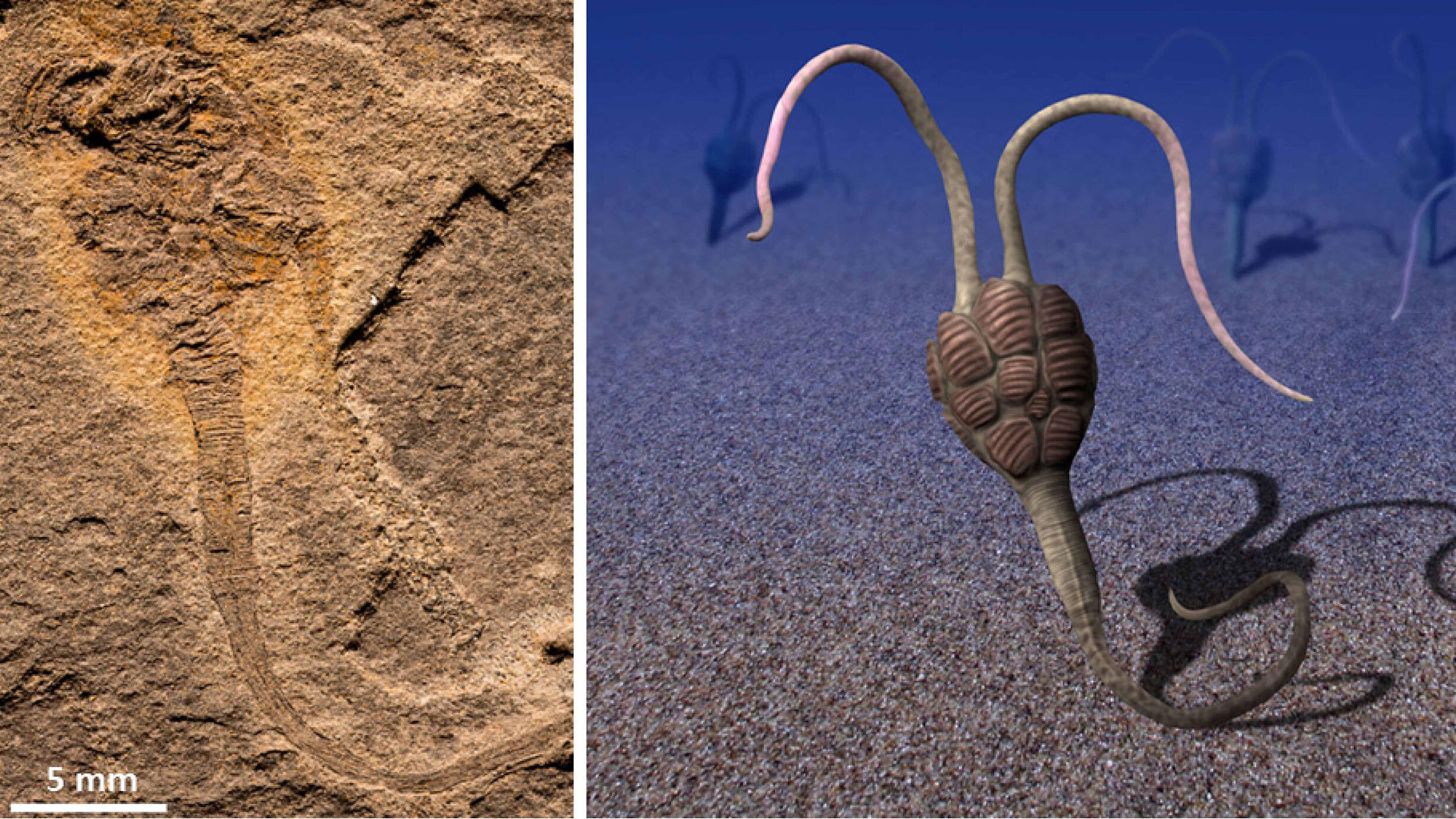 A 540-million-year-old fossil of a Cambrian-era marine animal named Yanjiahella biscarpa was discovered in Hubei Province, China.
A 540-million-year-old fossil of a Cambrian-era marine animal named Yanjiahella biscarpa was discovered in Hubei Province, China.Eight years ago, researchers were surprised to find a small fossil embedded in rocks in what is now Hubei Province, China. Named Yanjiahella biscarpa, the 540-million-year-old bilaterally symmetrical fossil was described as a mysterious multi-plated animal with a muscular stalk that could not be clearly placed in any known group.
Then, last year, a different group of researchers published an interpretation of Yanjiahella, identifying it as the earliest member of the group that includes starfish, sea urchins, and their relatives—called echinoderms. But now, a new study published in the journal Nature Communications, conducted by an international team of paleontologists that includes scientists from the Museum, returns Yanjiahella to its place as an enigmatic animal, separate from echinoderms.
“Our analysis showed there was equal support for placing Yanjiahella in several different positions in the tree of life. Unfortunately, with the data we have, it is impossible to accurately determine Yanjiahella’s closest relatives,” said co-author Davey Wright, a Gerstner Scholar and Lerner-Gray Fellow at the Museum.
Read about how Museum scientists used DNA to classify another mysterious marine animal.
The Cambrian was one of the most important periods in the history of life. In the space of only a few millions of years, the seas were filled with diverse and complex animals, including the relatives of all the major groups alive today. This sudden appearance of animal life in the fossil record is known as the Cambrian Explosion, and Yanjiahella is just one small part of this pivotal episode.
While previous work had suggested Yanjiahella was the oldest and most primitive echinoderm, pushing back the origin of the group by 20 million years, the new study challenges this idea. “We recognize Yanjiahella as an important fossil that almost certainly fits somewhere within the deuterostome tree of life—the evolutionary lineage comprising vertebrates, hemichordates, and echinoderms,” Wright said. “Thus, Yanjiahella is still a—very distant—relative of vertebrates that may or may not belong to the deuterostome lineage that led to starfish and sea lilies.”